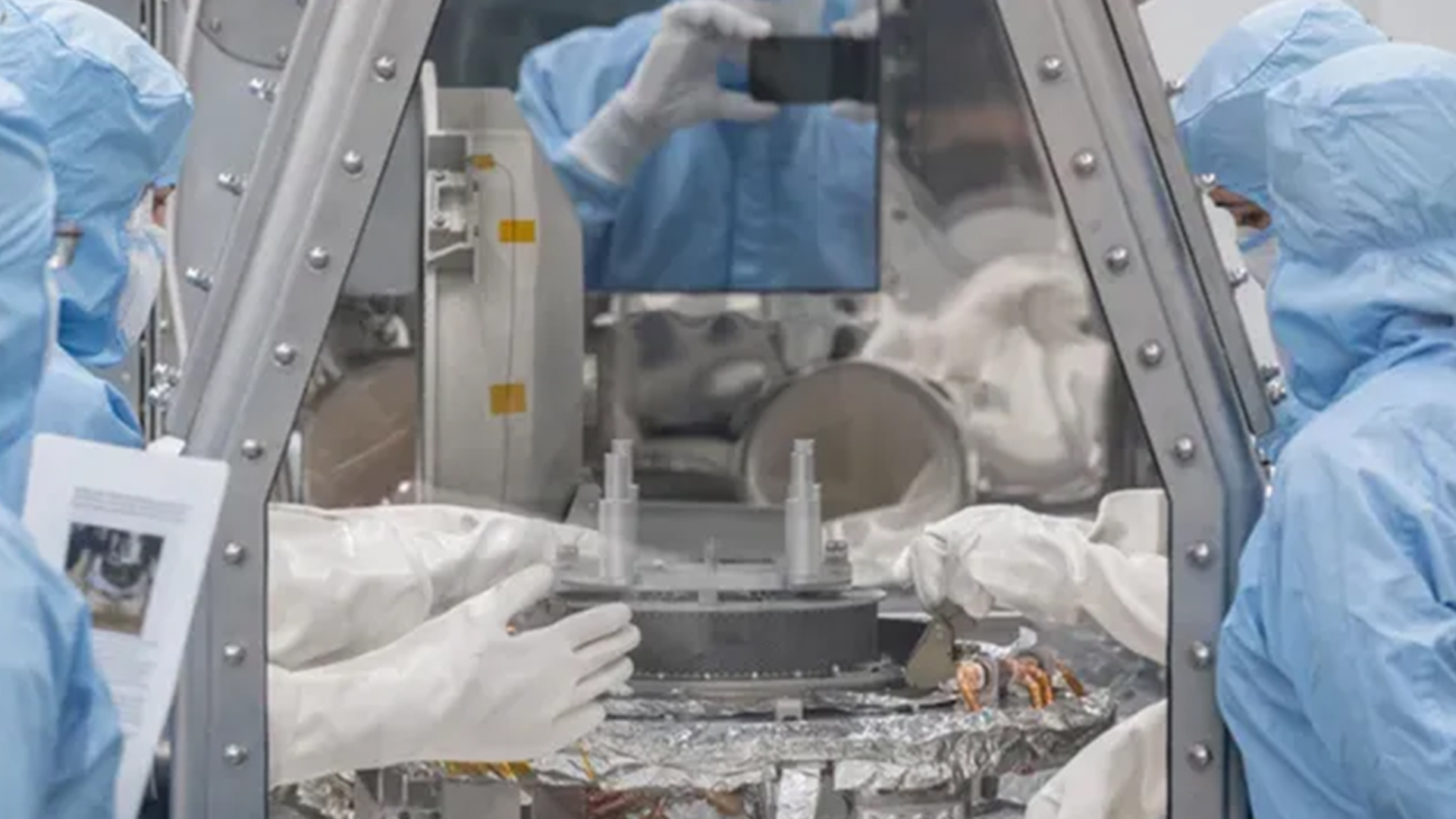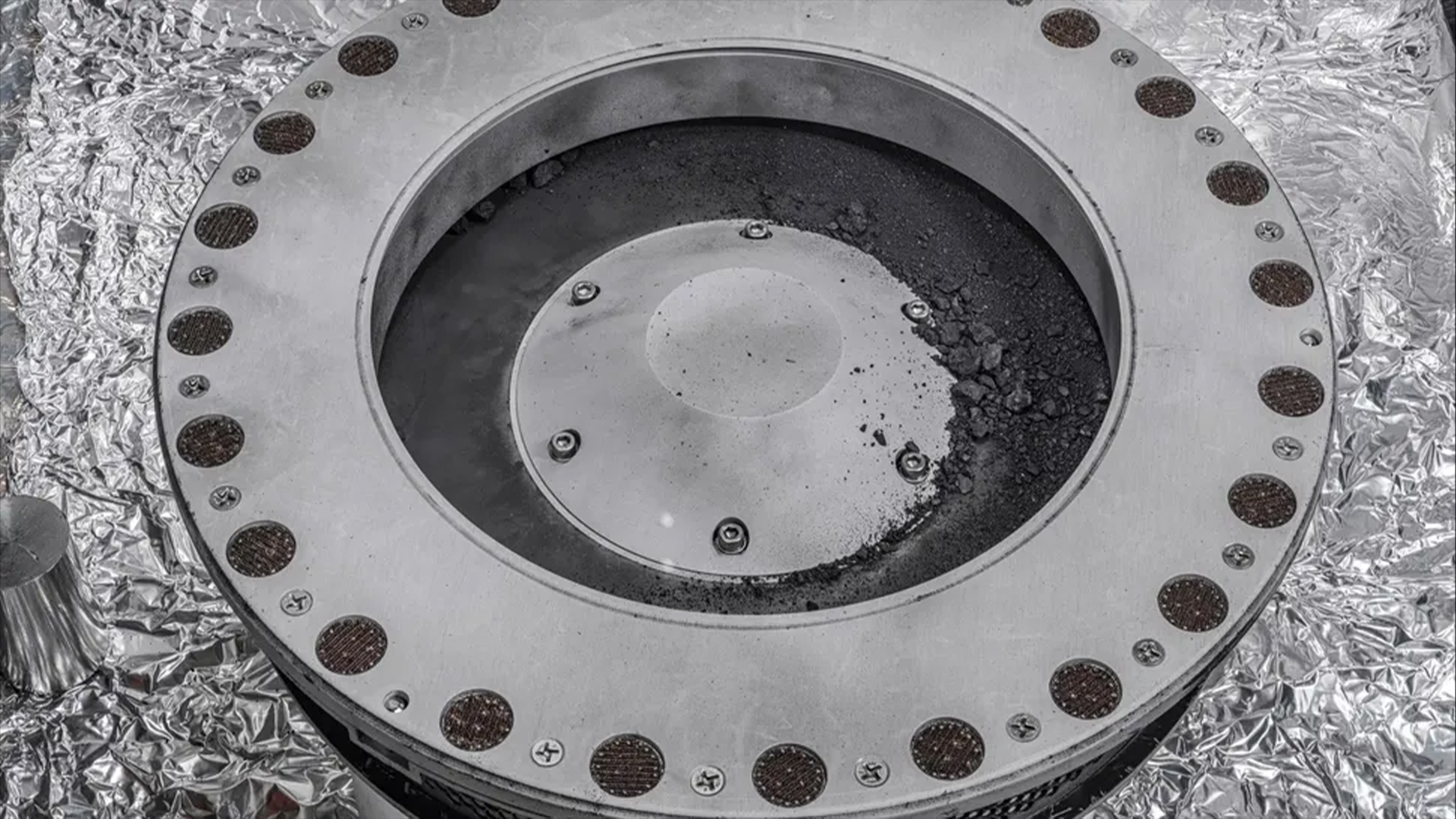NASA is locked out of its OSIRIS-REx asteroid sample because of 2 faulty fasteners
NASA is struggling to open a capsule containing precious asteroid samples from the OSIRIS-REx mission. Luckily, there is plenty of material to study on the outside of the container.

Sept. 24 was a big day for NASA, when an orange-and-white capsule containing pieces of an asteroid landed on Earth, charred from its ultrahigh-speed fall through our atmosphere. The asteroid in question, named Bennu, is thought to have been roaming space since the early days of our solar system — meaning these samples could reveal to us what our cosmic neighborhood looked like way before we got here.
Shot into space as part of the agency's OSIRIS-REx mission in 2016, the capsule was enclosed for years within a spacecraft that made a 4-billion-mile-long journey to reach Bennu. Once on the asteroid's surface, it then extended an arm that briefly touched down on the rock in order to retrieve a little bit of its material.
The hope, scientists had said, was to collect at least 60 grams of Bennu's material — and, on Monday (Oct. 23), the OSIRIS-REx team announced the mighty spacecraft managed to retrieve far more. Far. More.

According to a NASA blog post, the curation team that's been processing the samples says it has removed and collected 70.3 grams (2.48 ounces) of Bennu material from the capsule so far — and it hasn't even actually been opened yet. Those 70.3 grams come from just the area on the outside (and part of the inside) of the sample collector's head.
"The sample processed so far includes the rocks and dust found on the outside of the sampler head, as well as a portion of the bulk sample from inside the head, which was accessed through the head’s mylar flap," the post states. "Additional material remaining inside the sampler head, called the Touch-and-Go Sample Acquisition Mechanism, or TAGSAM, is set for removal later, adding to the mass total."
Even though OSIRIS-REx isn't the first asteroid-sample-return mission humanity has completed — JAXA's Hayabusa takes that title — it is the heftiest. Or, in other words, the capsule that landed in September delivered the largest-ever asteroid sample to our planet.
And NASA, in fact, intends on sharing the wealth.
Sign up for the Live Science daily newsletter now
Get the world’s most fascinating discoveries delivered straight to your inbox.
The agency has said it will give 25% of the Bennu bits to over 200 scientists at 25 different facilities, 4% to the Canadian Space Agency and 0.5% to JAXA. (NASA received about 10% of the Hayabusa 1 asteroid payload from a space rock named Itokawa.) The remaining approximately 70%, the team says, will be stored at Johnson Space Center to be studied for years to come, much like Apollo moon rock samples continue to be investigated decades after being brought to Earth by astronauts.
Part of the reason there is so much of the Bennu sample within this capsule actually has to do with the touch-and-go process itself. When the OSIRIS-REx sample collection mechanism dipped toward the rock to gather a few asteroid pieces, scientists watching were surprised to see Bennu wasn't a nice, solid object like you might expect. No, it was kind of malleable; when the sample collection arm made contact with the rock, shrouds of dust particles were released into the air, causing quite a scene and almost swallowing the spacecraft.
This is also why scientists still aren't sure exactly how much sample is in the OSIRIS-REx capsule in general. We'll only know when the container is finally opened up. Next, the team will start tackling how to perform that task— but, according to the blog post, that might prove slightly difficult.
"After multiple attempts at removal, the team discovered two of the 35 fasteners on the TAGSAM head could not be removed with the current tools approved for use in the OSIRIS-REx glovebox," it says. "The team has been working to develop and implement new approaches to extract the material inside the head, while continuing to keep the sample safe and pristine."
Basically, the OSIRIS-REx scientists have many regulations in place for how to deal with the sample because it's very important they don't interfere with its preservation. For instance, the blog post says, all curation work is performed inside a special glove box that has a constant flow of nitrogen. Without that flow, the sample might be exposed to Earth's atmosphere.
"While the procedure to access the final portion of the material is being developed," the post continues, "the team has removed the TAGSAM head from the active flow of nitrogen in the glovebox and stored it in its transfer container, sealed with an O-ring and surrounded by a sealed Teflon bag to make sure the sample is kept safe in a stable, nitrogen-rich, environment."
Originally posted on Space.com.

Monisha Ravisetti is Space.com's Astronomy Editor. She covers black holes, star explosions, gravitational waves, exoplanet discoveries and other enigmas hidden across the fabric of space and time. Previously, she was a science writer at CNET, and before that, reported for The Academic Times. Prior to becoming a writer, she was an immunology researcher at Weill Cornell Medical Center in New York. She graduated from New York University in 2018 with a B.A. in philosophy, physics and chemistry. She spends too much time playing online chess. Her favorite planet is Earth.










